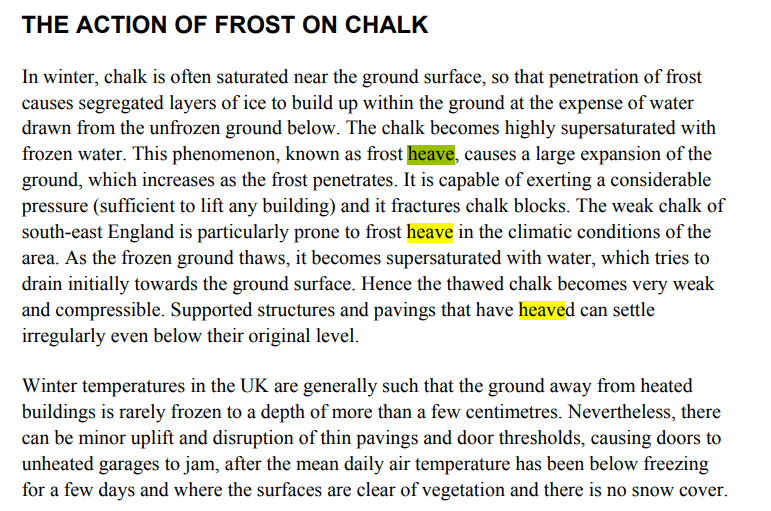Good day esteemed colleagues,
I have limited experience working with chalk and looking for some general advise or reference that speaks to the expansive/shrink-swell/volume change potential of chalk.
I have suggested to a client that ground bearing slabs are unsuitable on the basis of potential heave due to seasonal changes in the groundwater regime as the chalk at the site (no superficial) is matrix dominated (Dm).
Unfortunately no atterberg testing was done and the structural engineer is adamant that the Chalk is different from clay( I agree) and therefore will not exhibit shrinking/swelling (here I disagree) and therefore heave should not be an issue.
The NHBC/CIRIA do not address this so struggling to find a reference to support.
They intend to build a lightly loaded 1-strorey office unit.
Any insight most welcome especially if anyone has experience working with chalk.
I have limited experience working with chalk and looking for some general advise or reference that speaks to the expansive/shrink-swell/volume change potential of chalk.
I have suggested to a client that ground bearing slabs are unsuitable on the basis of potential heave due to seasonal changes in the groundwater regime as the chalk at the site (no superficial) is matrix dominated (Dm).
Unfortunately no atterberg testing was done and the structural engineer is adamant that the Chalk is different from clay( I agree) and therefore will not exhibit shrinking/swelling (here I disagree) and therefore heave should not be an issue.
The NHBC/CIRIA do not address this so struggling to find a reference to support.
They intend to build a lightly loaded 1-strorey office unit.
Any insight most welcome especially if anyone has experience working with chalk.

